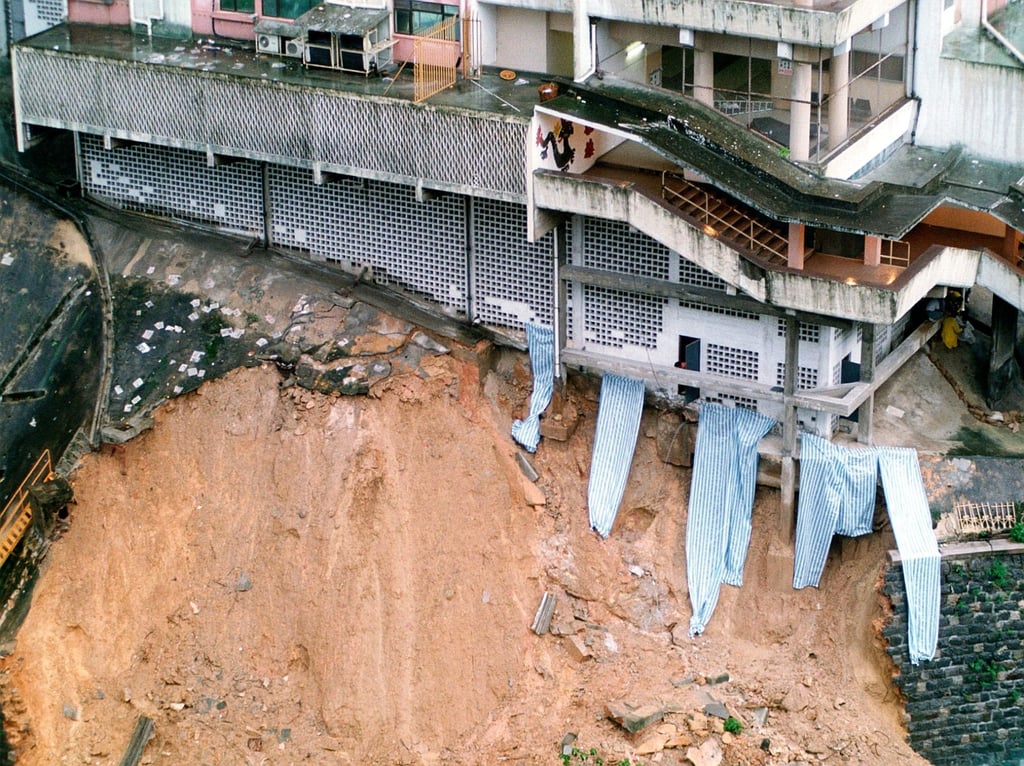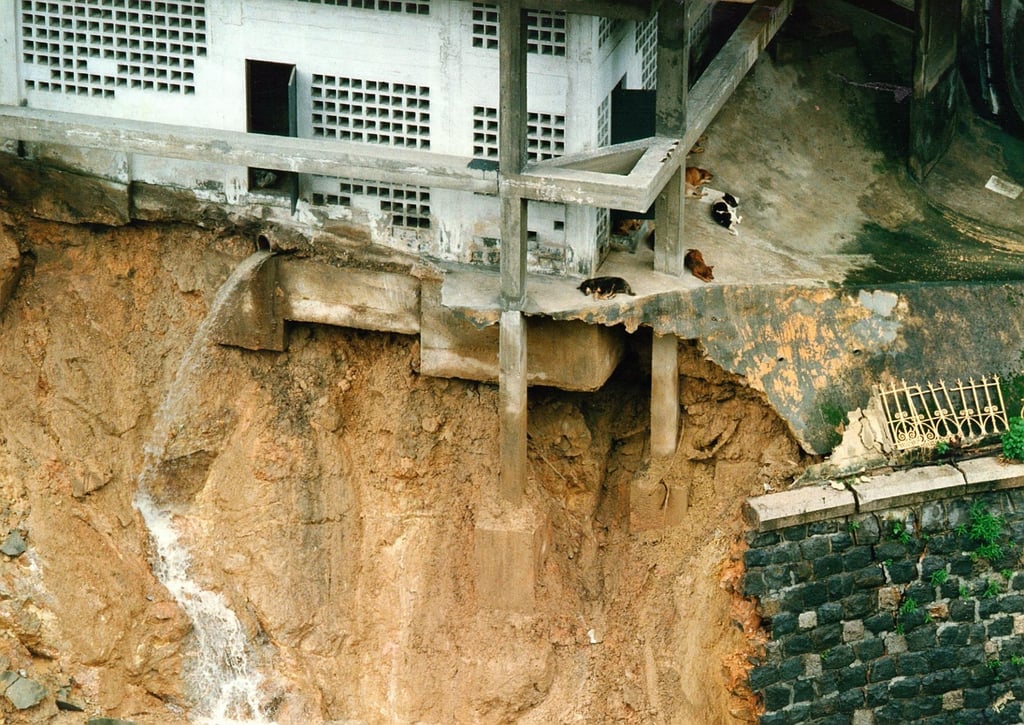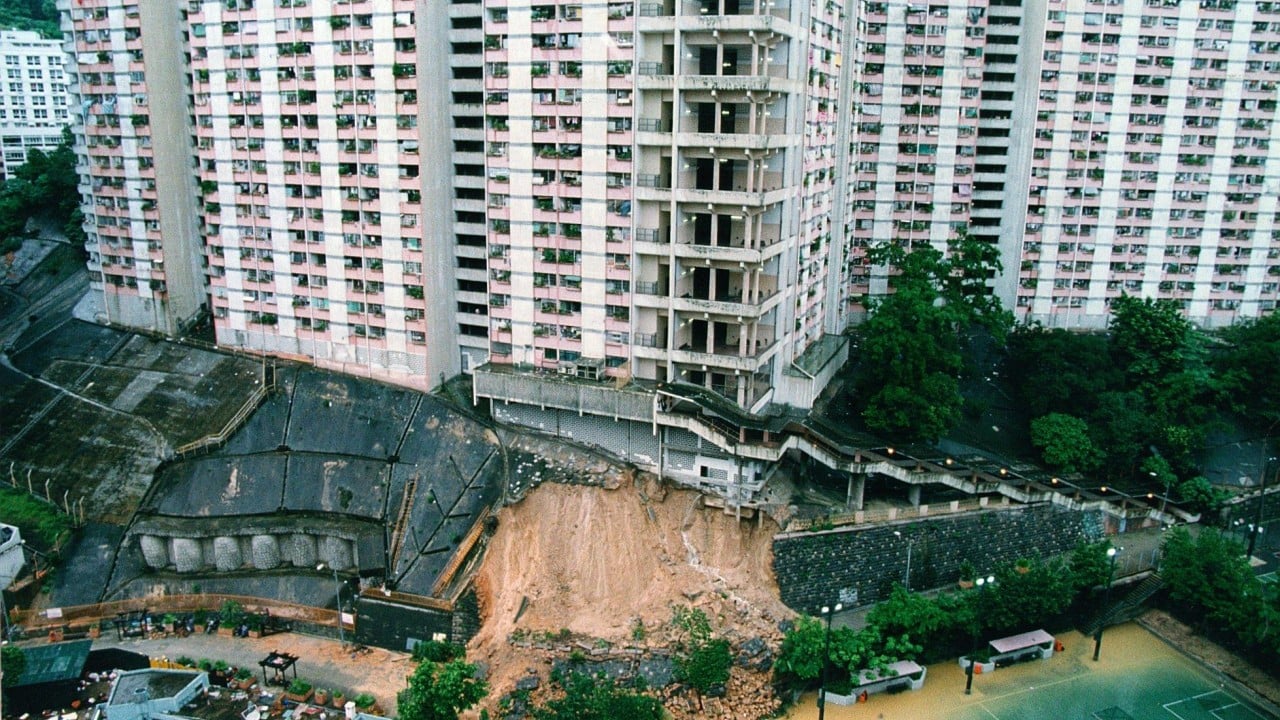This article was first published on July 24, 1994
Three die in landslip
A man and his nine-year-old daughter were among three people killed on July 23, 1994 when a retaining wall below one of Hong Kong’s biggest housing estates collapsed on to a busy footpath.
Emergency services immediately evacuated 2,000 families from the 20-year-old, 21-storey Kwun Lung Lau Estate building in Smithfield Road, Kennedy Town, fearing that it might collapse.
Also killed was another man, 26-year-old Ng Yuk-wing. Early this morning emergency services were still searching the mud and rocks for more trapped pedestrians.
Among the injured were two other members of the dead man and girl’s family – the 33-year-old mother and her 15-year-old son. Both were in fair condition at Queen Mary Hospital.
Witnesses said the collapse, at about 8.30pm, was heralded by a noise like a bomb exploding. It was followed by screams for help.
It left an eight-metre-high pile of rubble and mud sprawling over the footpath and an adjacent sitting area.
Emergency services rushed to the scene and had just begun to dig for survivors when another collapse sent them racing for cover. No one was hurt.

Director of the Fire Services, Jerry Lam Chek-yuen, said: “We are moving rocks out by hand, but there is no sign of life according to the heat detectors.
“We have no idea how many people may be under the rubble. The police and survivors cannot give us an exact number of casualties.
“It is possible that more walls or even the whole building may collapse. Four of the seven towers have been evacuated.”
Dozens of blue-clad firefighters worked in solemn silence, carefully levering away rock after rock, while other rescuers stood behind the glare of hastily-erected lighting straining to catch the faintest moan from beneath the debris.
Hundreds of the evacuated people were housed overnight in schools and halls in nearby Pokfield Road. Others were taken in by friends or relatives. It is unclear when they will be able to return to their homes.
The disaster came after almost 48 hours of torrential rain had brought Hong Kong to a near standstill, causing at least one other death, floods and landslides as the territory was lashed by the heaviest storms in 20 years.
On July 22, 1994, 297 millimetres of rain fell in a 24-hour period, while Hong Kong and the New Territories were drenched by another 195.1mm the next day.

The black rainstorm warning – part of a system introduced after widespread landslips on May 8, 1992, left five people dead – was raised for the first time on July 23, 1994. But ironically, it was down when disaster hit at Smithfield Road.
The black signal was first raised at 5.50am, prompting government spokesmen to warn residents of squatter villages and those living on unstable slopes to take cover in emergency shelters.
More than 60 people fled to 31 emergency shelters across the territory, with the largest numbers – 31 – going to storm refuges in Yuen Long. Police boat patrols scoured the sea around Hong Kong last night for signs of people washed away by floodwaters.
Banks, the courts and businesses remained shuttered all day and marriage ceremonies at civil registries were cancelled in the morning.
Police used inflatable dinghies to rescue New Territories villagers from floodwaters of up to three metres that ruined crops and livestock.
Police and firefighters received 42 reports of flooding and 82 landslides across the territory.

At Kai Tak, two inbound flights were diverted: a Philippines Airlines jet was redirected to Taiwan, while an Air China flight was forced to reroute to Guangzhou.
The black signal was lowered at 11am, when the downpour appeared to be subsiding.
Forecasters at the Royal Observatory predicted last night that the killer downpours were likely to continue on July 24, 1994, raising the risk of more landslides and flooding.
They extended the thunderstorm warning throughout the night.
Torrential rain also battered southern China and Macau on July 23, 1994, causing millions of dollars worth of damage, destroying crops, roads, homes and vehicles, and leaving scores injured or homeless.


